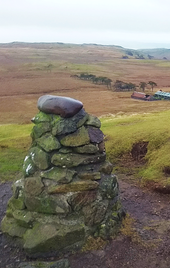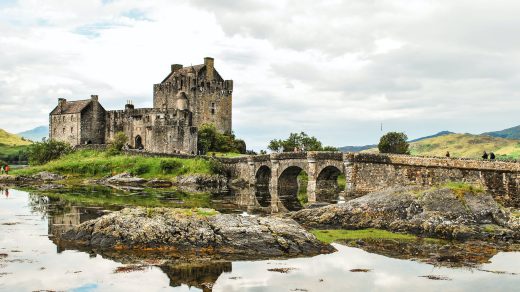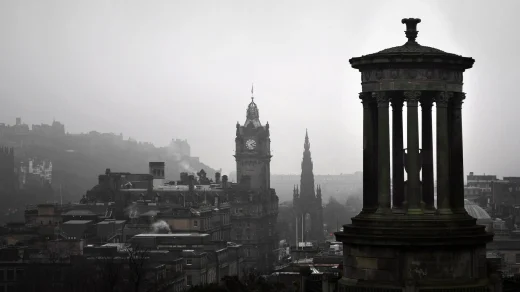The History of Scotland is known to have begun by the end of the last glacial period (in the paleolithic), roughly 10,000 years ago. Prehistoric Scotland entered the Neolithic Era about 4000 bc, the Bronze Age about 2000 bc, and the Iron Age around 700 bc. Scotland’s recorded history began with the arrival of the Roman Empire in the 1st century when the province of Britannia reached as far north as the line between the firths of Clyde to the Forth.
North of this was Caledonia, whose people were known in Latin as “Picti”, “the painted ones”. Constant risings forced Rome’s legions back: Hadrian’s Wall attempted to seal off the Roman south and the Antonine Wall attempted to move the Roman border north. The latter was swiftly abandoned and the former overrun, most spectacularly during the Great Conspiracy of the 360s. As Rome finally withdrew from Britain, Gaelic raiders called the Scoti began colonizing Western Scotland and Wales.
According to 9th- and 10th-century sources, the Gaelic kingdom of Dál Riata was founded on the west coast of Scotland in the 6th century.

In the following century, the Irish missionary Columba founded a monastery on Iona and introduced the previously pagan Scoti and pagan Picts to Celtic Christianity. Following England’s Gregorian mission, the Pictish king Nechtan chose to abolish most Celtic practices in favour of the Roman rite, restricting Gaelic influence on his kingdom and avoiding war with Anglian Northumbria.[1] Towards the end of the 8th century, the Viking invasions began. Successive defeats by the Norse forced the Picts and Gaels to cease their historic hostility to each other and to unite in the 9th century, forming the Kingdom of Scotland.
The Kingdom of Scotland was united under the descendants of Kenneth MacAlpin, the first king of a united Scotland. His descendants, known to modern historians as the House of Alpin, fought among each other during frequent disputed successions. The last Alpin king, Malcolm II, died without issue in the early 11th century and the kingdom passed through his daughter’s son, Duncan I, who started a new line of kings known to modern historians as the House of Dunkeld or Canmore. The last Dunkeld king, Alexander III, died in 1286 leaving only a single infant granddaughter as heir; four years later, Margaret, Maid of Norway herself died in a tragic shipwreck en route to Scotland.
England, under Edward I, would take advantage of the questioned succession in Scotland to launch a series of conquests into Scotland. The resulting Wars of Scottish Independence were fought in the late 13th and early 14th centuries as Scotland passed back and forth between the House of Balliol and the House of Bruce. Scotland’s ultimate victory in the Wars of Independence under David II confirmed Scotland as a fully independent and sovereign kingdom. When David II died without issue, his nephew Robert II established the House of Stewart (the spelling would be changed to Stuart in the 16th century), which would rule Scotland uncontested for the next three centuries.
James VI, Stuart king of Scotland, also inherited the throne of England in 1603, and the Stuart kings and queens ruled both independent kingdoms until the Act of Union in 1707 merged the two kingdoms into a new state, the Kingdom of Great Britain.
Ruling until 1714, Queen Anne was the last Stuart monarch. Since 1714, the succession of the British monarchs of the houses of Hanover and Saxe-Coburg and Gotha (Windsor) has been due to their descent from James VI and I of the House of Stuart.
During the Scottish Enlightenment and Industrial Revolution, Scotland became one of the commercial, intellectual and industrial powerhouses of Europe. Later, its industrial decline following the Second World War was particularly acute. In recent decades Scotland has enjoyed something of a cultural and economic renaissance, fueled in part by a resurgent financial services sector and the proceeds of North Sea oil and gas. Since the 1950s, nationalism has become a strong political topic, with serious debates on Scottish independence, and a referendum in 2014 about leaving the British Union.




I really enjoyed this. My father was a good part Scotch-Irish – he would have loved reading this.
thanks for all your support Mary xx
thanks for all your support Mary xx
It’s fantastic that you are getting ideas from this post
as well as from our discussion made at this time.